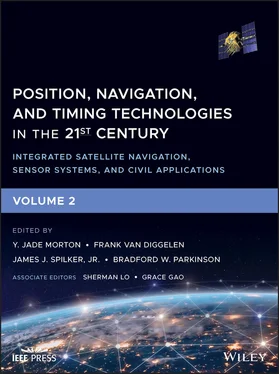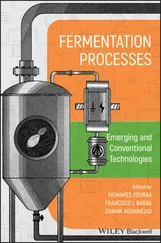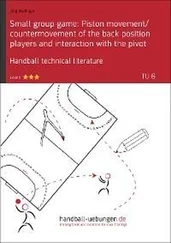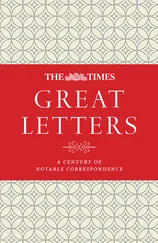123 123 E. Miluzzo, N.D. Lane, K. Fodor, R. Peterson, H. Lu, M. Musolesi, S.B. Eisenman, X. Zheng, and A.T. Campbell, “Sensing meets mobile social networks: The design, implementation and evaluation of the CenceMe application,” in Proceedings of ACM Conference on Embedded Networked Sensor Systems (SenSys), 2008.
124 124 T. Iso and K. Yamazaki, “Gait analyzer based on a cell phone with a single three‐axis accelerometer,” in Proceedings of ACM Conference on Human‐Computer Interaction with Mobile Devices and Services (MobileHCI), 2006.
125 125 J.‐G. Park, A. Patel, D. Curtis, S. Teller, and J. Ledlie, “Online pose classification and walking speed estimation using handheld devices,” In Proceedings of ACM International Conference on Ubiquitous Computing (UbiComp), 2012.
126 126 R. Harle, “A survey of indoor inertial positioning systems for pedestrians,” IEEE Communications Surveys & Tutorials, Vol. 15, No. 3, 1281–1293, 2013.
127 127 K. Park, H. Shin, and H. Cha, “Smartphone‐based pedestrian tracking in indoor corridor environments,” Springer Personal Ubiquitous Computing, Vol. 17, No. 2, pp. 359–370, 2013.
128 128 M.H. Afzal, V. Renaudin, and G. Lachapelle, “Assessment of indoor magnetic field anomalies using multiple magnetometers,” in ION GNSS, September 2010, pp. 21–24.
129 129 M. Youssef, M.A. Yosef, and M. El‐Derini, “GAC: Energy‐efficient hybrid GPS‐accelerometer‐compass GSM localization,” in Proceedings of IEEE Global Telecommunications Conference (GLOBECOM), 2010.
130 130 J.W. Kim and C. Park, “A step, stride and heading determination for the pedestrian navigation system,” Technology, Vol. 3, No. 1, pp. 273–279, 2005.
131 131 U. Steinhoff and B. Schiele, “Dead reckoning from the pocket – an experimental study,” in Pervasive Computing and Communications (PerCom), 2010 IEEE International Conference on, 29 March 2010–2 April 2010, pp. 162–170.
132 132 X. Zhu, Q. Li, and G. Chen, “APT: Accurate outdoor pedestrian tracking with smartphones,” in Proceedings of IEEE International Conference on Computer Communications (INFOCOM), 2013.
133 133 K.‐C. Lan and W.‐Y. Shih, “Using floor plan to calibrate sensor drift error for indoor localization,” in Proceedings of the Joint ERCIM eMobility and MobiSense Workshop (ERCIM), 2013.
134 134 D. Fox, S. Thrun, W. Burgard, and F. Dellaert, “Particle filters for mobile robot localization,” in Sequential Monte Carlo Methods in Practice, pp. 401–428, Springer, 2001.
135 135 O. Woodman and R. Harle, “Pedestrian localisation for indoor environments,” in Proceedings of ACM International Conference on Ubiquitous Computing (UbiComp), 2008.
136 136 S. Beauregard, Widyawan, and M. Klepal, “Indoor PDR performance enhancement using minimal map information and particle filters,” in Proceedings of the 2012 IEEE/ION Position, Location and Navigation Symposium, 2008, pp. 141–147.
137 137 Widyawan, M. Klepal, and D. Pesch, “A Bayesian Approach for RF‐Based Indoor Localisation,” in Proceedings of the 4th IEEE International Symposium on Wireless Communication Systems 2007 (ISWCS 2007), Trondheim, Norway, October 16 2007.
138 138 Z. Yang, C. Wu, Z. Zhou, X. Zhang, X. Wang, and Y. Liu, “Mobility increases localizability: A survey on wireless indoor localization using inertial sensors,” ACM Computing Surveys (CSUR), Vol. 47, No. 3, 2015: 54.
139 139 S. Yoon, K. Lee, and I. Rhee, “FM‐based indoor localization via automatic fingerprint DB construction and matching,” in Proceedings of ACM International Conference on Mobile Systems, Applications, and Services (MobiSys), 2013.
140 140 P. Robertson, M. Angermann, B. Krach, and M. Khider, “Slam dance: Inertial‐based joint mapping and positioning for pedestrian navigation,” in Proceedings of Inside GNSS, pp. 48–59, 2010.
141 141 M. Montemerlo, S. Thrun, D. Koller, and B. Wegbreit, “FastSLAM: A factored solution to the simultaneous localization and mapping problem,” in Proceedings of the AAAI National Conference on Artificial Intelligence, Edmonton, Canada, 2002.
142 142 J. Seitz, T. Vaupel, J. Jahn, S. Meyer, J. G. Boronat, and J. Thielecke, “A hidden Markov model for urban navigation based on fingerprinting and pedestrian dead reckoning,” in Proceedings of the 13th International Conference on Information Fusion, pp. 1–8, 2010.
143 143 L. Rabiner and B. Juang, “An introduction to hidden Markov models,” ASSP Magazine, IEEE, Vol. 3, pp. 4–16, January 1986.
144 144 H. Wang, A. Szabo, and J. Bamberger, “Performance comparison of nonlinear filters for indoor WLAN positioning,” The 11th International Conference on Information Fusion, Vol. 1, 2008.
145 145 O. Woodman and R. Harle, “Pedestrian localisation for indoor environments,” Proceedings of the 10th International Conference on Ubiquitous Computing, ACM New York, 2008, pp. 114–123.
146 146 H. Wen, Z. Xiao, N. Trigoni, and P. Blunsom, “On assessing the accuracy of positioning systems in indoor environments,” in Proceedings of the 10th European Conference on Wireless Sensor Networks, pp. 1–17, 2013.
147 147 L.R. Welch, “Hidden Markov models and the Baum‐Welch algorithm,” IEEE Information Theory Society Newsletter, Vol. 53, No. 4, 2003.
148 148 S. Pasricha, V. Ugave, C.W. Anderson, and Q. Han, “LearnLoc: A framework for smart indoor localization with embedded mobile devices,” in Proceedings of the 10th International Conference on Hardware/Software Codesign and System Synthesis, IEEE Press, pp. 37–44, October 2015.
149 149 A. Martin, C. Ionut, and C. Romit, “SurroundSense: Mobile phone localization via ambience fingerprinting,” MobiCom, 2009.
150 150 L. Bitsch, G. Jo´, S. Paul, and W. Klaus, “FootPath: Accurate map‐based indoor navigation using smartphones,” IPIN. September 2011.
151 151 A. Mittal, S. Tiku, and S. Pasricha, “Adapting convolutional neural networks for indoor localization with smart mobile devices,” ACM Great Lakes Symposium on VLSI (GLSVLSI), May 2018.
152 152 R. Faragher, C. Sarno, and M. Newman, “Opportunistic radio slam for indoor navigation using smartphone sensors,” in Position Location and Navigation Symposium (PLANS), 2012 IEEE/ION, April 2012, pp. 120–128.
153 153 B. Ferris, D. Fox, and N. Lawrence, “Wifi‐SLAM using Gaussian process latent variable models,” in Proceedings of the 20th International Joint Conference on Artificial Intelligence, Ser. IJCAI’07, San Francisco, California: Morgan Kaufmann Publishers Inc., 2007, pp. 2480–2485.
154 154 P. Mirowski, T.K. Ho, S. Yi, and M. MacDonald, “SignalSLAM: Simultaneous localization and mapping with mixed WiFi, Bluetooth, LTE and magnetic signals,” in Indoor Positioning and Indoor Navigation (IPIN), 2013 International Conference on, IEEE, October 2013, pp. 1–10.
155 155 G. Grisetti, R. Kummerle, C. Stachniss, and W. Burgard, “A tutorial on graph‐based SLAM,” IEEE Intelligent Transportation Systems Magazine, Vol. 2, No. 4, 2010.
156 156 P. Lazik, N. Rajagopal, O. Shih, B. Sinopoli, and A. Rowe, “Alps: A Bluetooth and ultrasound platform for mapping and localization,” In Proceedings of the 13th ACM Conference on Embedded Networked Sensor Systems, ACM, November 2015, pp. 73–84.
157 157 C. Brignone, T. Connors, G. Lyon, and S. Pradhan, “SmartLOCUS: An autonomous, self‐assembling sensor network for indoor asset and systems management,” Mobile Media Syst. Lab., HP Laboratories, Palo Alto, California, Tech. Rep, 41, 2003.
158 158 A. Smith, H. Balakrishnan, M. Goraczko, and N. Priyantha, “Tracking moving devices with the cricket location system,” Proceedings of the 2nd USENIX/ACM MOBISYS Conference, Boston, MA, June 2004.
159 159 Radianse, Inc. Radianse Indoor Positioning. http://www.radianse.com
Читать дальше











